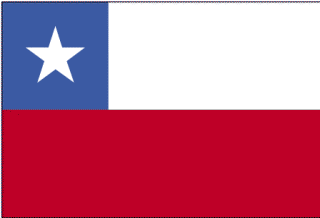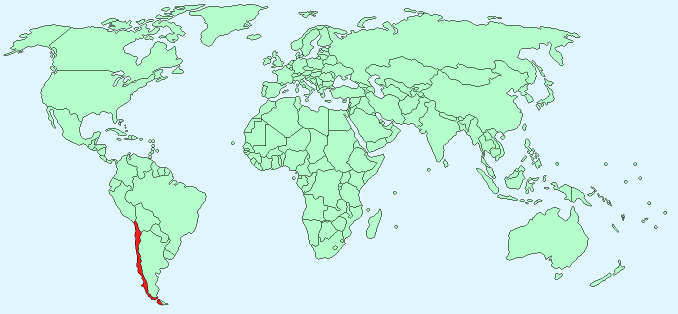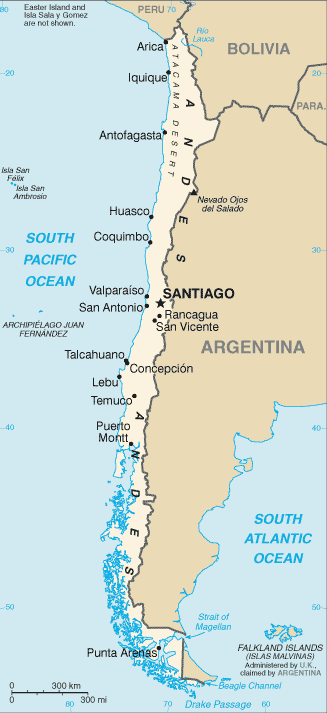Chile


Continent – South America
Size – 756,950 km²
Geography – Low coastal mountains, central valley, Andes in east
Language – Spanish
Religion – 70% Roman Catholic, 15% Evangelical, 8.3% none, 7.7% other
Monetary Unit – Peso
Natural Resources – copper, timber, iron ore, nitrates, precious metals, molybdenum
Agriculture – grapes, apples, pears, onions, wheat, corn, oats, peaches, garlic, asparagus, beans; beef, poultry, wool; fish; timber
Industry – copper, other minerals, foodstuffs, fish processing, iron and steel, wood and wood products, transport equipment, cement, textiles

Neighbouring Countries – Peru, Bolivia, Argentina
Population – 17,363,894 (2014 estimate)
Population Growth Rate – 0.91%
Average Life Expectancy – 77
Capital City – Santiago (population 5,145,599)
Highest Mountain – Nevado Ojos del Salado (6,880 m)
Longest River – Loa (440 km)
Climate – North – cool desert -17°C to 28°C, Central Mediterranean – warm, dry summers 10°C to 26°C, cool, wet winters 5°C to 18°C, South cool and wet all year
Yearly Rainfall – North – minimal rainfall, Central – 40cm (approx), South -300cm (approx)
Plant Life – North – very little plant life, Central – cactus, espinos, Chilean pine, and the copihue, a red bell-shaped flower that is Chile’s national flower, South – dense forests of laurels, magnolias, and various species of conifers and beeches
Animal Life – puma, cougar, guanaco, Andean wolf, chilla, marsupials, small deer
Bird Life – many species of small birds
Aquatic Life – many species of fish, penguins, whales, seals
Harvard Reference for this page:
Heather Y Wheeler. (2015). Chile. Available: https://www.naturalhistoryonthenet.com/Facts_Figures/Country_Facts/chile.htm. Last accessed Monday, July 18, 2016
Facts and Figures Pages
